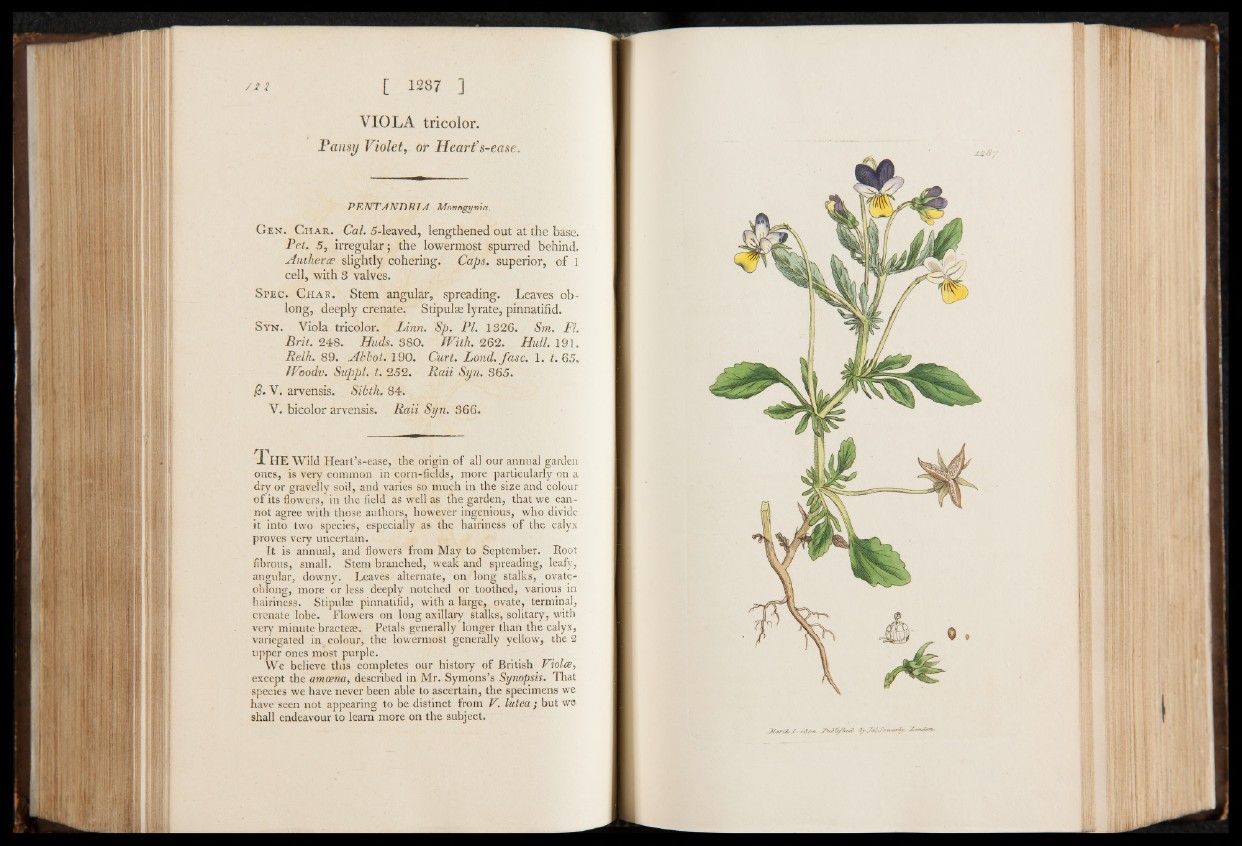
/ 2 2 [ 1 2 8 7 ]
VIOLA tricolor.
Pansy Violet, or Heart’s-ease.
PENTANDRIA Monogynia.
G e n . C h a r . Cal. 5-leaved, lengthened out at the base.
P et. 5, irregular; the lowermost spurred behind.
Antherce slightly cohering. Caps, superior, of 1
cell, with 3 valves.
S p e c . Ch a r . Stem angular, spreading. Leaves oblong,
deeply crenate. Stipulas lyrate, pinnatifid.
Sy n . Viola tricolor. Linn. Sp. PI. 1326. Sm. Fl.
Brit. 248. Huds. 380. With. 262. Hull. 191.
Relh. 89. Abbot. 190. Curt. Land. fasc. 1. t. 65.
IVoodv. Suppl. t. 252. Rail Syn. 365.
jS. V. arvensis. Sibth. 84.
V. bicolor arvensis. R ail Syn. 366.
r p
JL HE Wild Heart’ s-ease, the origin of all our annual garden
ones, is very common in corn-fields, more particularly on a
dry or gravelly soil, and varies so much in the size and colour
of its flowers, in the field as well as the garden, that we cannot
agree with those authors, however ingenious, who divide
it into two species, especially as the hairiness of the calyx
proves very uncertain.
It is annual, and flowers from May to September. Root
fibrous, small. Stem branched, weak and spreading, leafy,
angular, downy. Leaves alternate, on long stalks, ovate-
oblong, more or less deeply notched or toothed, various in
hairiness. Stipulse pinnatifid, with a large, ovate, terminal,
crenate lobe. Flowers on long axillary stalks, solitary, with
very minute bracteae. Petals generally longer than the calyx,
variegated in_ colour, the lowermost generally yellow, the 2
upper ones most purple.
We believe this completes our history of British Violce,
except the amoena, described in Mr. Symons’s Synopsis. That
species we have never been able to ascertain, the specimens we
have seen not appearing to be distinct from V. lutea ; but we
shall endeavour to learn more on the subject.